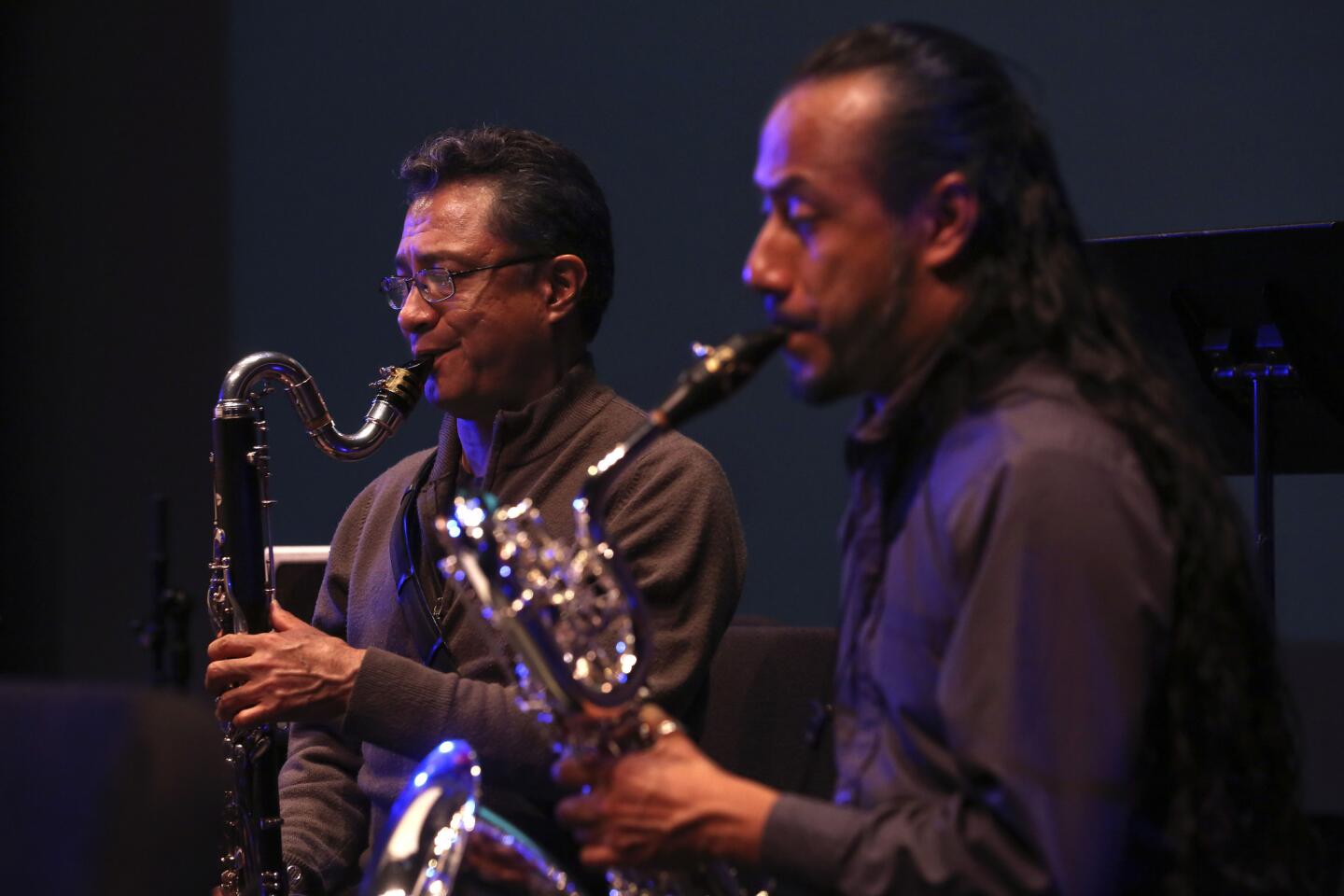Review: Liminar makes Mexico’s Carrillo look like the next great rediscovery
- Share via
Julián Carrillo was the great problem of Mexican music. Born in 1875, he invented a system of microtonal music in the 1920s and was possibly the most visionary composer Latin America ever produced, music’s equivalent of a magical realist long before that term ever existed. He fit no mold.
A paradoxical figure, he was seemingly a revolutionary but was on the wrong side of the Mexican Revolution. Promoted as a protégé by the pre-revolutionary government, he started out as a man and musician of the establishment who regularly came into conflict with the post-revolutionary establishment. He wrote music that sounds today as if it could have come only from Mexico, yet he was attacked by a younger generation of composers, led by Carlos Chávez, for not espousing a party-line nationalist style. Carrillo could be shockingly original. He could also be a stylistic sieve.
SIGN UP for the free Essential Arts & Culture newsletter >>
Although once recognized as one of Mexico’s most important composers with a pan-American reach (Leopold Stokowski was a champion and commissioned a piece for the Philadelphia Orchestra), Carrillo has been almost forgotten. There may be hardly any recordings of his extensive oeuvre, though from YouTube, the website of his estate (www.sonido13.com and a fascinating newly published study of Carrillo in English by Alejandro L. Madrid, you can get a pretty good idea of what all the fuss was (and should still be) about.
And in two ear-opening programs based around Carrillo’s peculiar works, at REDCAT on Friday and Saturday nights, the superb Mexico City modern music ensemble Liminar made Carrillo look like the next great rediscovery among neglected 20th century composers.
Trained in Mexico and Europe, Carrillo started out imitating such then-modern composers as Richard Strauss. He soon became a devoted ultra-modernist and in the early 1920s developed a compositional system he called “Sonido 13.” The name stands for the “13th note,” namely the pitches that fall between the traditional 12 of our major and minor scales.
A couple of years before Harry Partch came up with his 43-note scale and began making specially designed microtonal instruments in California, Carrillo invented instruments to play his pieces that divided the octave into as many as 96 equal parts. Among them were a fretless guitar, a double bass and harp similar to those Partch would come up with. Carrillo designed a piano with its 88 keys covering a single octave, and he also invented the necessary notation to go along with this. (The competitive Partch was dismissive of Carrillo.)
Liminar, a recently formed ensemble of several of the country’s top new music specialists and composers, has been in the forefront of a Carrillo revival. Two years ago it gave the first Mexican performance in more than two decades of “Preludio a Colón,” Carrillo’s most famous microtonal score. Two slightly different versions of the work for soprano and a chamber ensemble that includes the microtonal Carrillo harp and quarter-tone guitar made up the bookends of the two REDCAT programs. In between there were other chamber pieces by Carrillo as well as works by members of the Liminar and other Mexican composers who have been influenced by Carrillo’s unconventional interest in sound if not by some of his more conventional ideas about structure and form.
The Carrillo pieces didn’t provide enough variety to get more than an inkling of what he was up to. But there was enough to get an idea why there is a small but growing Mexican resurgence of interest in the composer that goes beyond the new music community and into spiritualist camps. This is woozy, psychedelic music to which you can seriously trip out.
The Carrillo pieces were from the composer’s most experimental years, 1924 to 1946, and they showed his obsession with creating spooky effects by going up and down scales full of sci-fi pitches you never knew existed. The music’s not all new; Carrillo picked a number of tricks from Scriabin, Villa-Lobos and Varèse.
In the “Preludio a Colón,” the greatest novelty is heard in a soprano part that could be the soundtrack for a séance and was sung with startling expressivity and purity by Carmina Escobar, who sported an equally striking hairstyle, her head shaved at the sides and centered by a reptilian blond streak in the center.
Violist Alexander Bruck captured the magnetic eeriness of the “Capricho en Cuartos,” a solo that divides the octave into eighths and 16ths. Two string quartets (Carrillo wrote several) were seas of sliding tones on stormy waters. A solo guitar suite, expertly played by José Manuel Alcántara, disconcertingly deconstructs Baroque forms. A Carrillo harp was used here and there for otherworldly effects.
The young composers followed suit mainly by putting much emphasis on tone color. Valeria Jonard’s “Viento, Agua, Piedra” explored the edge of audibility, asking for the faintest of bowing or blowing. Juan Cristóbal Cerrillo’s “Eclipses Para Chapultepec” consisted of six strange chordal sonic complexes for six eclipses expected to occur in Mexico City throughout the millennium. Carlos Iturralde’s “Fata Morgana” was a sonic mirage, with a trio of winds offstage mysteriously altering the sounds of violin, cello and bass on stage.
Whence Carrillo? There are symphonies, concertos, operas and much chamber music. His last major work was a 1962 Mass for Pope John XXIII both traditional and microtonally way out. We know little. The audience both nights at REDCAT was small — larger on Saturday than on Friday as word got out. Many looked for recordings. Liminar has yet to make one.
Curiosity seekers will find two of the Liminar players exploring more modern Mexican repertory at the downtown loft space called the wulf on Tuesday night.
More to Read
The biggest entertainment stories
Get our big stories about Hollywood, film, television, music, arts, culture and more right in your inbox as soon as they publish.
You may occasionally receive promotional content from the Los Angeles Times.



















